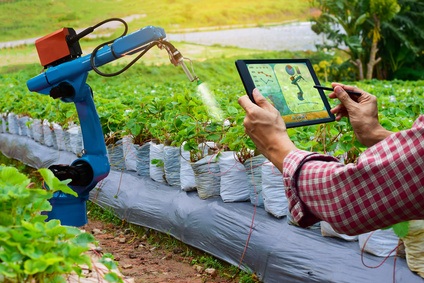USDA unveils ‘Agriculture Innovation’ agenda
by February 20, 2020 11:17 pm 984 views

The amount of food produced to sustain the world’s population will have to double this century to keep up with population growth, according to experts. New and improved ways to increase yields will have to be developed along with methods to better irrigate and enrich soil. The United States Agriculture Department said Thursday (Feb. 20) it intends to take a lead role.
U.S. Secretary of Agriculture Sonny Perdue announced the Agriculture Innovation agenda, a department-wide initiative to align resources, programs, and research to position American agriculture to better meet future global demands. Specifically, USDA will stimulate innovation so that American agriculture can achieve the goal of increasing production by 40% while cutting the environmental footprint of U.S. agriculture in half by 2050.
“We know we have a challenge facing us: to meet future food, fiber, fuel, and feed demands with finite resources. USDA’s Agriculture Innovation Agenda is our opportunity define American agriculture’s role to feed everyone and do right as a key player in the solution to this challenge,” said Perdue.
“This agenda is a strategic, department-wide effort to better align USDA’s resources, programs, and research to provide farmers with the tools they need to be successful. We are also continually mindful of the need for America’s agriculture industry to be environmentally, socially, and economically sustainable to maintain our position as a leader in the global effort to meet demand. We are committed as ever to the environmental sustainability and continued success of America’s farmers, ranchers, foresters, and producers,” he said.
The first component of the Ag Innovation agenda is to develop a U.S. ag-innovation strategy that aligns and synchronizes public and private sector research. The second component is to align the work of customer-facing agencies and integrate innovative technologies and practices into USDA programs. The third component is to conduct a review of USDA productivity and conservation data. USDA already closely tracks data on yield, but the environmental side data is lagging. Finally, USDA has set benchmarks for accountability. These targets will help measure progress toward meeting the food, fiber, fuel, feed, and climate demands of the future.
Some of the benchmarks include:
Food loss and waste: Advance work toward the United States’ goal to reduce food loss and waste by 50% in the United States by the year 2030.
Carbon Sequestration and Greenhouse Gas: Enhance carbon sequestration through soil health and forestry, leverage the agricultural sector’s renewable energy benefits for the economy, and capitalize on innovative technologies and practices to achieve net reduction of the agricultural sector’s current carbon footprint by 2050 without regulatory overreach.
Water Quality: Reduce nutrient loss by 30% nationally by 2050.
Renewable Energy: Work to increase the production of renewable energy feedstocks and set a goal to increase biofuel production efficiency and competitiveness to achieve market-driven blend rates of 15% of transportation fuels in 2030 and 30% of transportation fuels by 2050.
